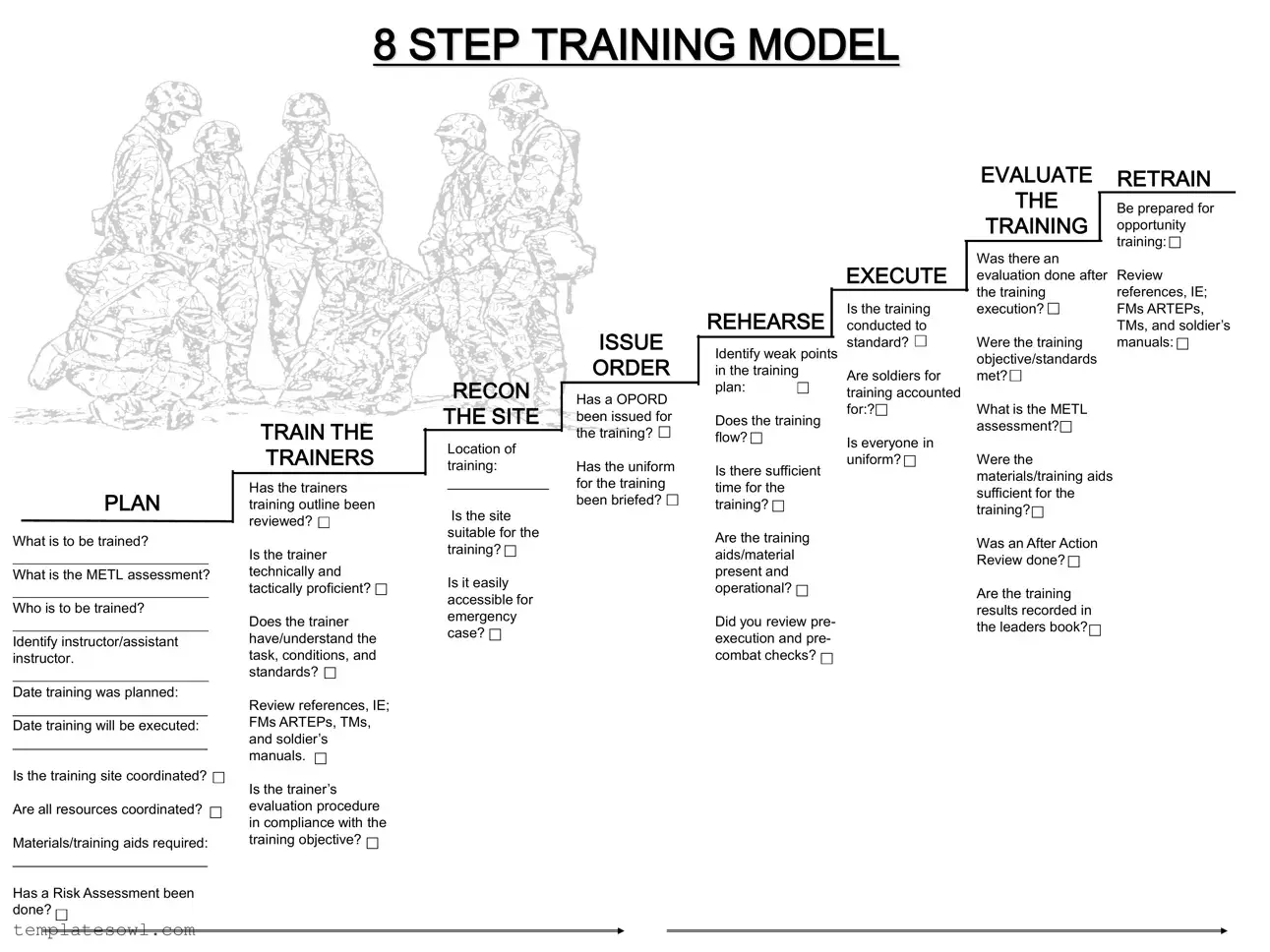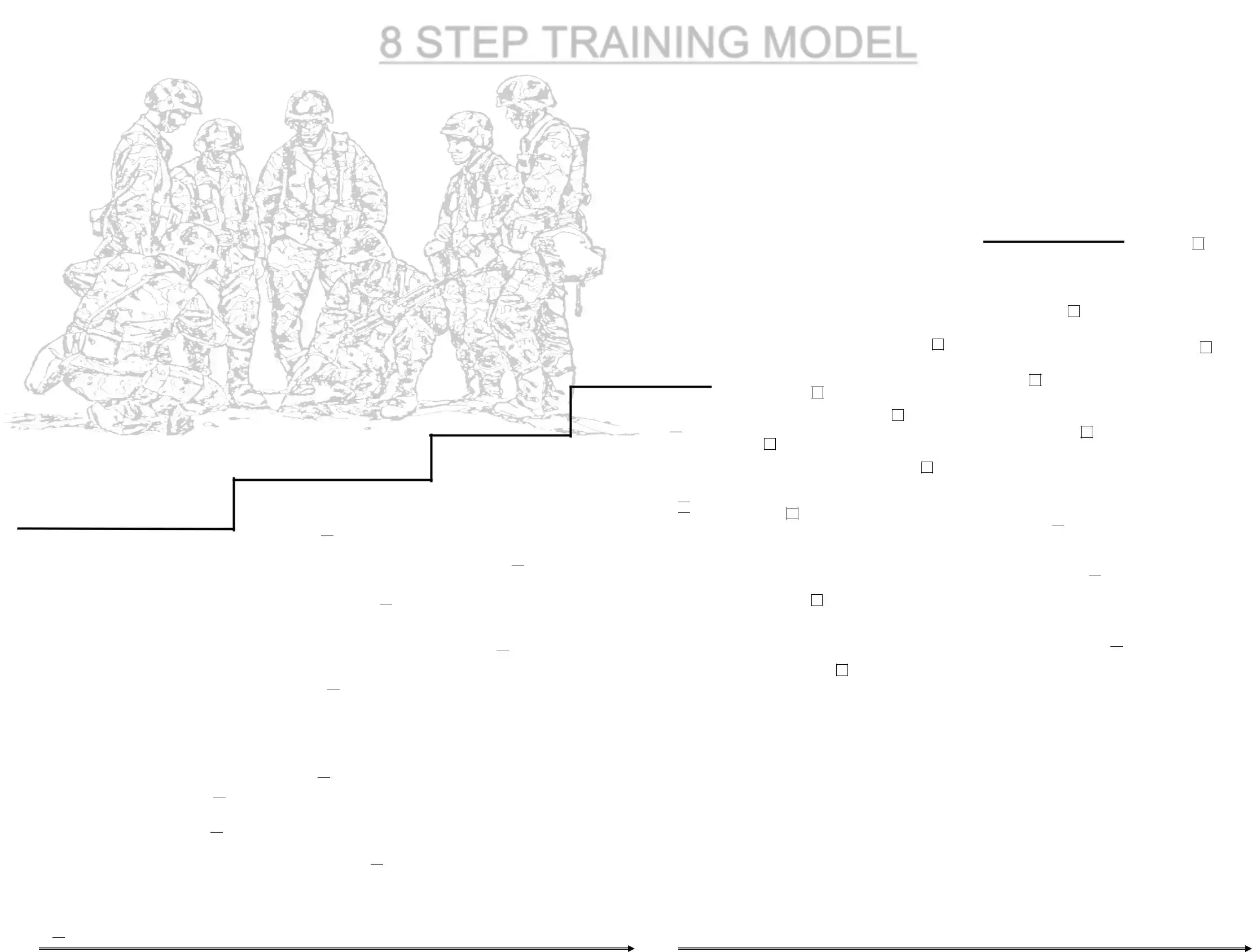What is the 8 Steps Training Model?
The 8 Steps Training Model is a structured approach to planning and executing training. It helps ensure that all essential aspects of training are addressed systematically, from identifying what needs to be trained to evaluating the process afterward. This model is designed to enhance training effectiveness and readiness.
What does METL assessment refer to?
METL stands for Mission Essential Task List. It is a critical evaluation that identifies the specific tasks essential for a unit’s mission success. Understanding the METL ensures that training is targeted toward the most crucial areas, allowing resources and time to be allocated effectively.
Who should be involved in the training process?
All relevant participants should be involved in the training process. This includes everyone who requires training as well as instructors or assistant instructors who will facilitate the teaching. Identifying these individuals early on is key to ensuring a successful training session.
What is the importance of a Risk Assessment?
A Risk Assessment is a vital step that identifies potential hazards associated with the training. Conducting this assessment helps in creating a safer training environment. It ensures the team is aware of any possible risks and prepares them to handle emergencies effectively.
Why is it important to review the trainers' outline before training?
Reviewing the trainers' training outline ensures that the instructor is well-prepared and that the training aligns with the outlined objectives. It checks the trainer's understanding of the tasks, conditions, and standards necessary for an effective training session.
What should be done if weaknesses are identified during the training?
If weaknesses are identified during the execution of training, it is crucial to address them immediately. Adjustments can be made to training techniques or materials to improve effectiveness. Continuous improvement is a key principle of the training model.
How are the results of the training evaluated and recorded?
After training, it’s essential to conduct an evaluation to determine if objectives were met and if training materials were sufficient. All findings should be documented in the leaders' book for future reference. This record is vital for planning subsequent training and ensuring accountability.

















